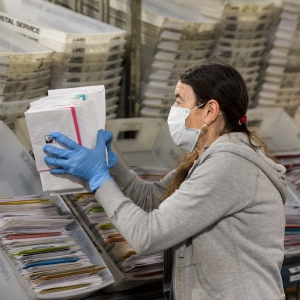Dangerous sedative found in 18% of fentanyl samples, NH lab estimates
| Published: 04-26-2023 7:57 PM |
Amounts of xylazine, a powerful veterinary-grade sedative, are being found in toxicology reports from around the state as heroin and fentanyl opioid overdoses continue to climb.
Xylazine, which is not a controlled substance, is easily accessible and is often used in combination with other drugs. Federal lawmakers are working to enact a law that would make it less accessible to drug traffickers while tracking the movement of the drug and providing law enforcement with additional resources.
“It’s welcome news that the (Biden) Administration will treat xylazine as an emerging drug threat but it’s critical that we take action now to stop illegal use,” U.S. Rep. Chris Pappas said in a statement.
Last month, Pappas helped introduce the Combating Illicit Xylazine Act, which was introduced in the Senate by Maggie Hassan and Jeanne Shaheen.
“But fentanyl continues to be the issue. If there’s no xylazine tomorrow, they’ll find another cutting agent,” said N.H. Department of Safety Commissioner Robert Quinn. “We are trying to raise awareness that this is just another additive to what is a very dangerous and lethal drug that can present more complications.”
Complications can include skin infections, heavy sedation, hypertension, and slowing of the heart and respiratory systems. Unlike heroin and fentanyl, which are opioids, xylazine alone cannot cause a fatal overdose by itself. And since it’s not an opioid, it does not respond to the overdose reversal drug naloxone, or Narcan.
“What’s happening is people are taking too much fentanyl and xylazine combined and when you put Naloxone into the situation, it removes the fentanyl so the xylazine is still there but it doesn’t cause people to die; it’s the fentanyl that causes the respiratory distress that causes people to die,” said Andrew Warner, director of overdose prevention for the Manchester Health Department. “You can take massive amounts and it won’t cause you to die. They’re saying there’s a new killer on the street that Narcan doesn’t respond to and that’s absolutely not true.”
So far this year, the Office of the Chief Medical Examiner found that between 15% and 18% of the fentanyl samples tested by the state’s forensic laboratory showed large amounts of xylazine, which is a start increase to the 2% found in 2019, according to the Department of Safety.
Article continues after...
Yesterday's Most Read Articles
“In New Hampshire, we want to stay ahead of the curve but on a more human side, it goes to show how people that are struggling and suffering from addiction now have one more piece that we have to educate them on so they know the dangers,” Quinn said.
Though new to the state, xylazine has been used as a cutting agent in heroin and fentanyl for a long time, Warner said, and was first reportedly used recreationally in New Jersey and Puerto Rico in the 1980s.
Long-term effects of the drug on the human body have not been studied or recorded.
“We started to see it come into Boston a year and a half ago and they have drug testing sites in Boston that can test the drugs people are using; we started to see it in a lot of the stuff they were testing along with fentanyl, organic heroin and synthetic benzodiazepines,” Warner said. “We started to see it in Manchester around the same time.”
Adding xylazine to opioids gave users a longer high, he added.
“No one really wants xylazine, per se, but the people using drugs don’t want fentanyl either; they want organic heroin but the end user doesn’t know what they’re using because they’re buying something without the resources to test it,” Warner said.
Despite the increase in deaths seen across the state, neither Concord nor Manchester law enforcement agencies have received positive traces of the drug from toxicology reports and, to their knowledge, have not had firsthand experience with the drug on the scene of an overdose, representatives said.
“We approach any situation the same and we treat it as if the individual may have the worst exposure possible,” said Justin Romanello, chief of the Bureau of Emergency Medical Services for the State of New Hampshire. “With xylazine, there is no indicator for it, but if the patient in front of you is not breathing or is significantly compromised, we need to start addressing that condition with the tools we have.”
Like most law enforcement in the state, first responders and paramedics won’t know if they’re dealing with xylazine, in addition to fentanyl or heroin, until an autopsy is complete and a toxicology report is returned, Romanello said.
“The best way to treat this is to not do it in the first place,” he continued.

 Plan on track to ship Upper Valley mail to Connecticut for sorting
Plan on track to ship Upper Valley mail to Connecticut for sorting West Lebanon crash
West Lebanon crash Over Easy: On bread, buttered popcorn and big sandwiches
Over Easy: On bread, buttered popcorn and big sandwiches
